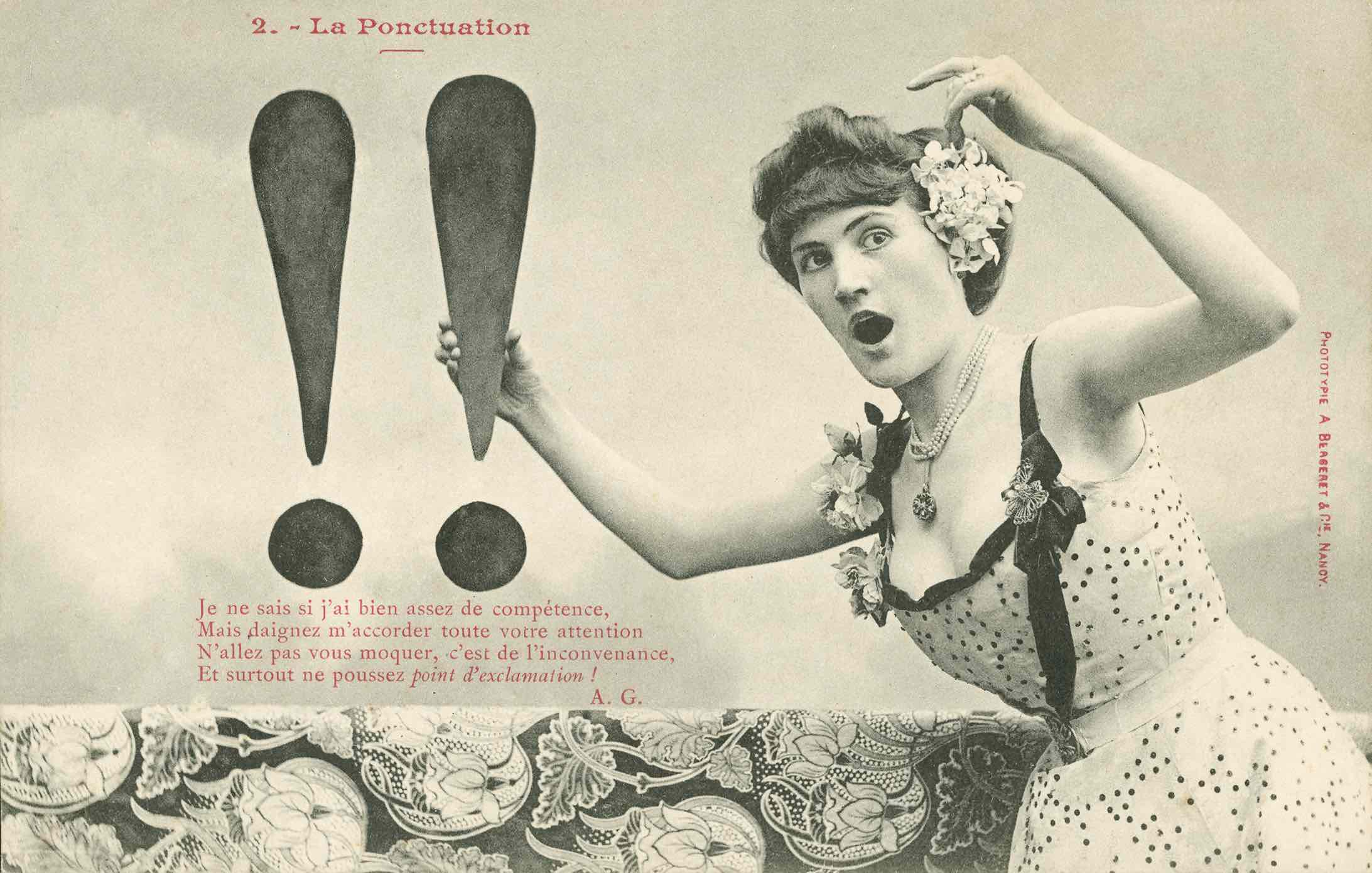The art of exclamation marks!
Length: • 4 mins
Annotated by Niklas

This is a short book, but it carries a punch, as does its subject, the exclamation mark – or shriek, or bang, as it is occasionally and graphically called. I use the word ‘graphically’ advisedly, for the punctuation mark falls into an ambiguous territory overlapping orthography and illustration. I say to myself that I don’t like it, but I do on occasion. I recently used it to describe the noise of my horrible doorbell (‘BZZZT!’) to convey the sensation of panic that occurs when I hear it. I also love it when the speech bubble above a cartoon character’s head contains nothing but an exclamation mark: pure surprise. My favourite example is in Snoopy’s case, for often his ears also stand up like exclamation marks themselves.
The exclamation mark seemed to know what it was about all along. We were just slow to catch up with it
But we have not always known how to use it. According to Florence Hazrat, the author of An Admirable Point, it took us a while to get a handle on it – as if it knew what it was about all along and we were just slow to catch up with it. In the Folio edition of Hamlet, the lines ‘How weary, stale, flat, and unprofitable/Seem to me all the uses of this world’ ends in a question mark rather than an exclamation mark, as do the next words: ‘Fie on’t’.
For centuries, though, grammarians have advised against using it too freely, considering it vulgar. Editors seem to have spent much time removing Jane Austen’s exclamation marks from her novels, although very little of her manuscript material survives to prove this beyond doubt. Politicians and propagandists have used it to grab their audience’s attention, which has also tarnished its reputation. It seems to be a mainly American thing. Hazrat’s book begins with the Boston Gazette’s headline of 1788: ‘BRIBERY AND CORRUPTION!!!’ ‘Make America great again’ was used as a slogan by Ronald Reagan and Bill Clinton, but it took the utterly unnuanced Donald Trump to add an exclamation mark – and, as Hazrat and several graphic designers before her noticed, some awful kerning and typography, with ‘make’ and ‘great again’ sans serif, and ‘America’ with serif. This might have been a deliberate attention-grabber, though.
And grabbing attention is the whole point (although the reason why the exclamation mark is so prevalent in comic books is because in the early days of cheap printing techniques a simple full stop would often be invisible). There’s the Italian wine which still calls itself Est! Est!! Est!!!, supposedly after the 12th-century Bishop Fugger’s prelate’s chalked the words on an inn door in Monte-fiascone, announcing that this was where the really good stuff was – but that’s nonsense, since the exclamation mark wasn’t invented until hundreds of years later, and the wine is not that good at all. Well, tastes may have changed.
As they do. In the early days of the internet, one authority – if you can have such a thing with the internet – advised posters to limit their use of the exclamation mark. But they soon gave up the struggle and said, in effect, ‘Go nuts!’ And, after all, the tone of words on a screen are more difficult to discern for some reason than words on a page, so every little helps. (The /s sign, not mentioned here, can be useful in pointing out sarcasm.) In 2018 a French typographer proposed 11 ‘feeling signs’, which he called Andersen signs, after Hans Christian Andersen, to denote various emotions (anger, happiness, disgust etc), so that sentences could be begun with the appropriate tone of voice when reading aloud to children. (This was something that threw me a lot in the days when I was reading to mine for the first time.)
An Admirable Point ends with a bewildering array of proposed new punctuation marks designed to illustrate even such abstract concepts as ‘seduction’ (‘appropriately curvy,’ says Hazrat), but I think we will survive without them. The wonderfully named interrobang, a question mark superimposed on an exclamation mark, never really took off; neither did the percontation mark, used to denote a question that doesn’t have a yes or no answer but manifold ones. This is a backwards question mark, and it was invented in 1575. You can see it in the manuscript of Thomas Middleton’s A Game at Chess.

But I do quite like the Spanish idea of using an upside down exclamation mark at the beginning of a sentence and ending with a right-side-up one – although does it defuse the surprise value of a final ! or enhance it? Hazrat’s book is scholarly enough to tell us who invented it and when (the Spanish Academy, in 1754), but also that the following words were Bart Simpson’s very first – and he used them, extremely appropriately, when he saw his parents having sex: ¡Ay caramba!